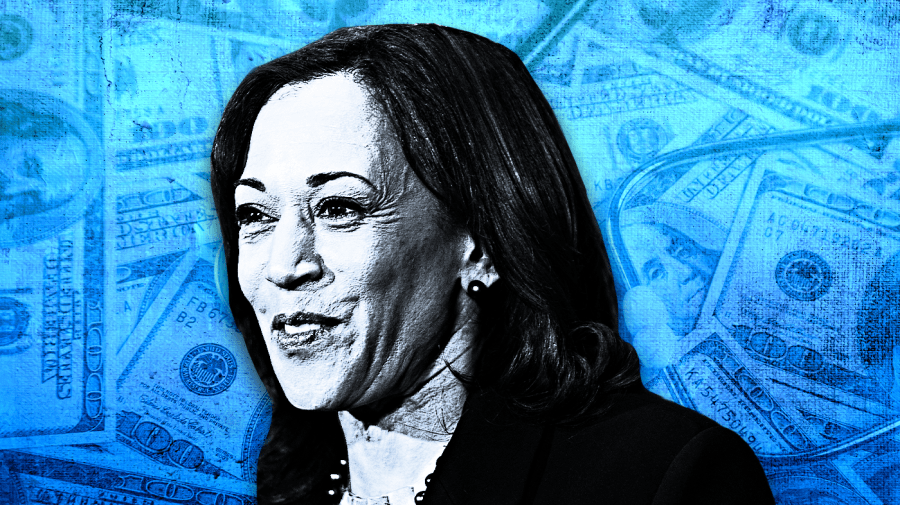Vice President Harris wants to erase billions of dollars in medical debt, a longtime progressive goal that Democrats hope will be an electoral winner in the fall.
The economic plan Harris released last week called for Harris and her running mate, Minnesota Gov. Tim Walz (D), to work with states to erase medical debt for millions of Americans “to help them avoid accumulating such debt in the future, because no one should go bankrupt just because they had the misfortune of becoming sick or hurt.”
But details on how it would be accomplished are thin, and the scope of the proposal would require enormous levels of cooperation with states and with Congress.
Voters have identified health costs as a priority in this election, and medical debt is an issue being increasingly highlighted by Democrats across the country.
Medical debt relief is a popular policy that’s easy for the public to understand. A June AP/NORC poll showed half of all Americans said it was extremely or very important for the U.S. government to provide debt relief for those who have yet to pay off medical treatments.
“It’s an issue that is universally seen as a problem, or nearly universally seen as a problem, among people on the left and the right,” said Allison Sesso, president and CEO of Undue Medical Debt, an advocacy group that purchases medical debt at steep discounts.
“And that, to me, is why it makes a lot of sense for either political party to take up this issue, and why it’s getting a lot of attention. Because it’s hurting people,” Sesso said.
An estimated 100 million people in the United States have medical or dental bills they are paying off or that are overdue. A study by KFF found people in the U.S. owe at least $220 billion in medical debt, with about 20 million people owing more than $250.
Harris has been leading the Biden administration’s initiatives on medical debt relief, including working with credit reporting companies Equifax, TransUnion and Experian to voluntarily remove some unpaid medical debt from people’s credit reports.
That effort helped about 30 million Americans remove unpaid debt from their credit reports.
Harris “personally has taken on this issue, and we haven’t seen previous administrations do so much on medical debt or do more to tackle this crisis than the current administration,” said Mona Shah, senior director of policy and strategy at Community Catalyst, a health advocacy group.
In June, Harris and the CFPB proposed new rules that would ban agencies from considering medical debt when calculating credit scores.
Neither policy would relieve medical debt, as the people impacted would still need to pay off their bills. It only affects information about unpaid debts that health care providers have sold to collection agencies.
Still, Harris and the White House pitched the policy as a way for Americans to achieve financial freedom.
“The burden of medical debt and its impact on credit reports inflicts serious financial repercussions on American families, restricting access to credit, increasing risk of bankruptcy, creating barriers to housing and health care access, and negatively impacting health outcomes,” the White House said in a fact sheet.
It’s unclear when, or if, the proposed rule will be finalized.
Shah noted Walz has also been a leader on medical debt relief, including championing a law that bans medical debt from being reported to credit bureaus, ends the automatic transfer of medical debt to a patient’s spouse and prevents providers from withholding care due to outstanding debt.
Walz has said medical debt is a personal issue for him. His father died of cancer when Walz was 19, leaving his mother drowning in debt.
“So the two of them together have a really strong history of tackling this crisis and really understanding the impact that it’s having on the day-to-day lives of individuals,” Shah said.
Advocates and experts said there is no consensus approach on medical debt relief.
States, cities and counties have been using federal funding from the American Rescue Plan to buy and eliminate $7 billion in medical debt, which Harris and the White House said is on track to help up to 3 million Americans by 2026.
States seem more than willing to tap into federal funding to purchase residents’ medical debt for pennies on the dollar, but there’s no guarantee Congress or future administrations will be willing to fund those efforts.
Republicans are also less likely to support government policies that simply erase a person’s medical debt without any other changes to the underlying causes of debt.
During a July hearing, Senate Health Committee ranking member Bill Cassidy (R-La.) said the government should focus more on oversight of hospitals to make sure they provide sufficient charity care.
“A one-time cancelation of medical debt is not a solution. It is a Band-Aid approach for a one-time problem that’s going to come back,” Cassidy said. “It also shifts the debt upon taxpayers … it’s not free.”
Recent research has also cast doubt on the effectiveness of buying and forgiving medical debt that’s already in collection.
Neale Mahoney, an economics professor at Stanford University, co-authored a National Bureau of Economic Research study that found relief had no impact on people’s mental health, credit access or financial distress. They were even less likely to pay existing medical bills.
Mahoney said North Carolina is implementing a model that shows promise.
State health officials, in close coordination with Harris on the federal side, established a first-of-its-kind program to encourage hospitals to relieve existing medical debt for approximately 2 million residents. It was approved by the federal government in late July.
All hospitals have now signed up to participate, which makes them eligible for extra Medicaid funding if they forgive existing debt accumulated since 2014 and take steps to prevent the accumulation of new debt.
Mahoney said the Medicaid incentive makes it more expensive on the federal side, but having hospitals work to prevent new debt is key because it addresses some root causes.
If it’s successful, the state aims to relieve a potential $4 billion in medical debt.
Sesso at Undue Medical Debt said that shows how heavy a lift eliminating $220 billion would be, especially since much depends on both internal state politics and state relationships with Washington.
But the hope is that the widespread appeal of eliminating medical debt will smooth over disagreements.
“The moment a president centers an issue, things can get political,” Mahoney said. “But … I think most Americans think that we shouldn’t compound health shock with a financial shock.”

